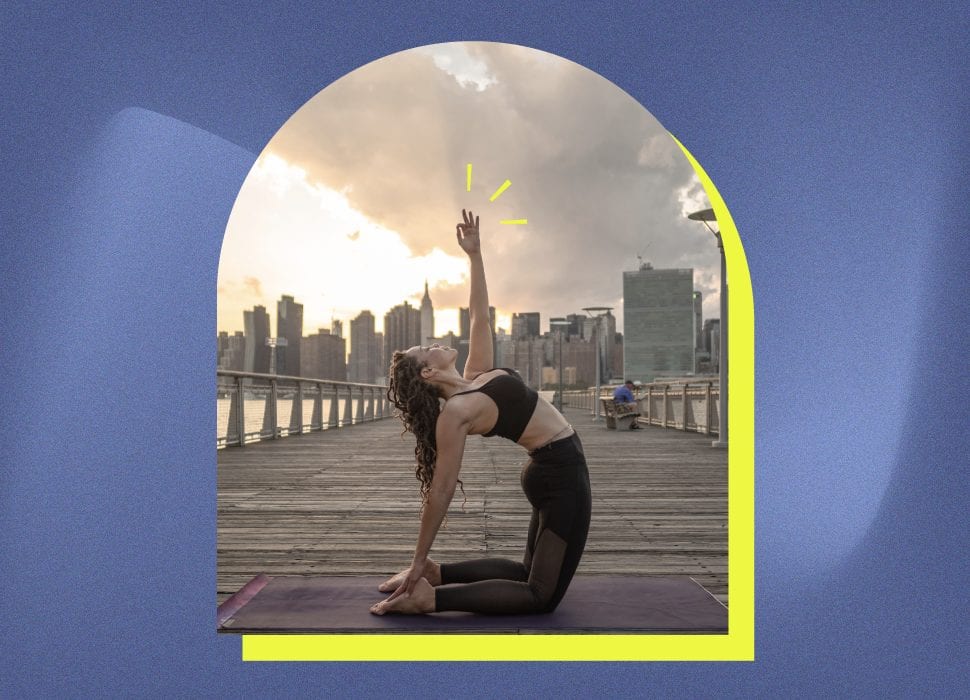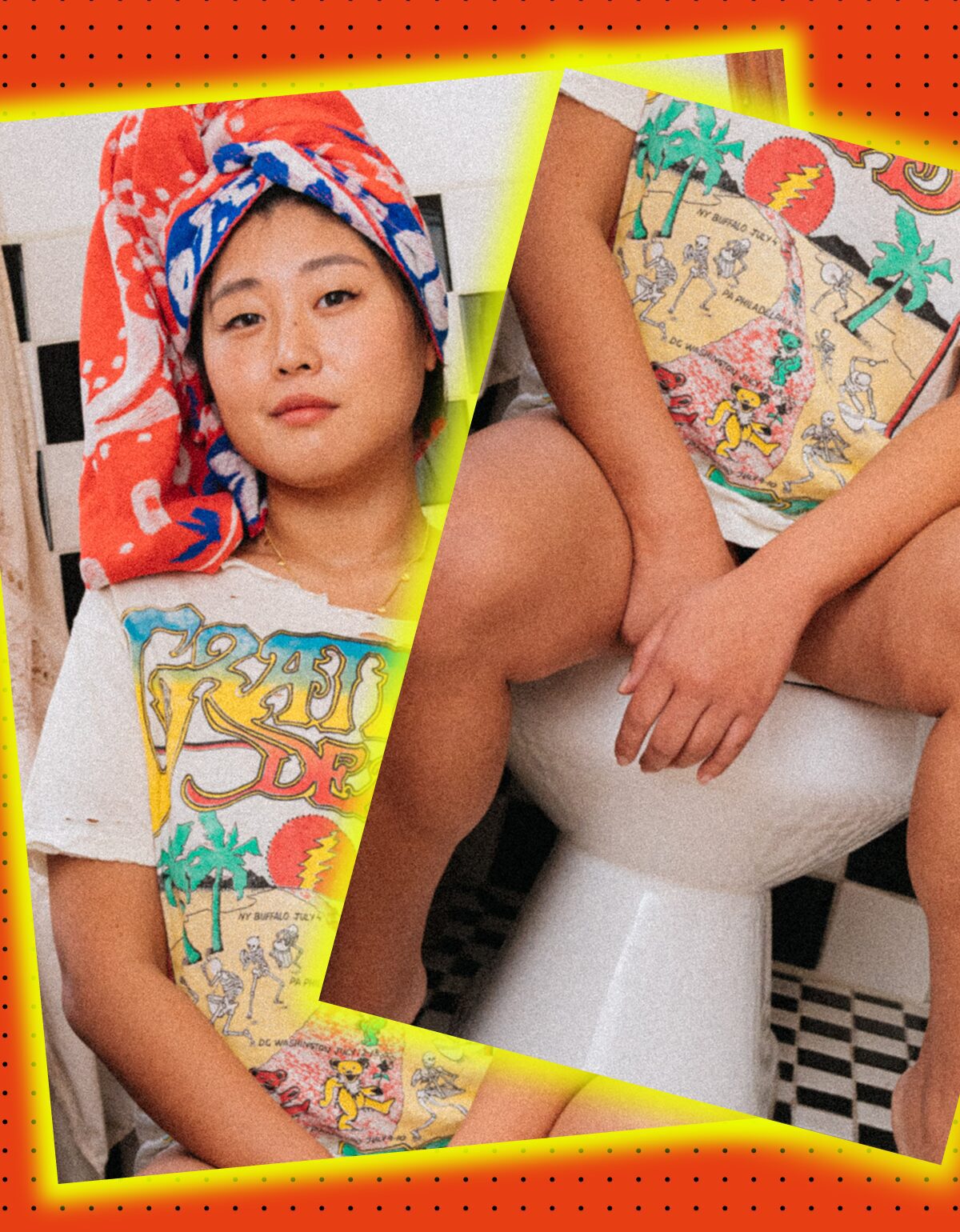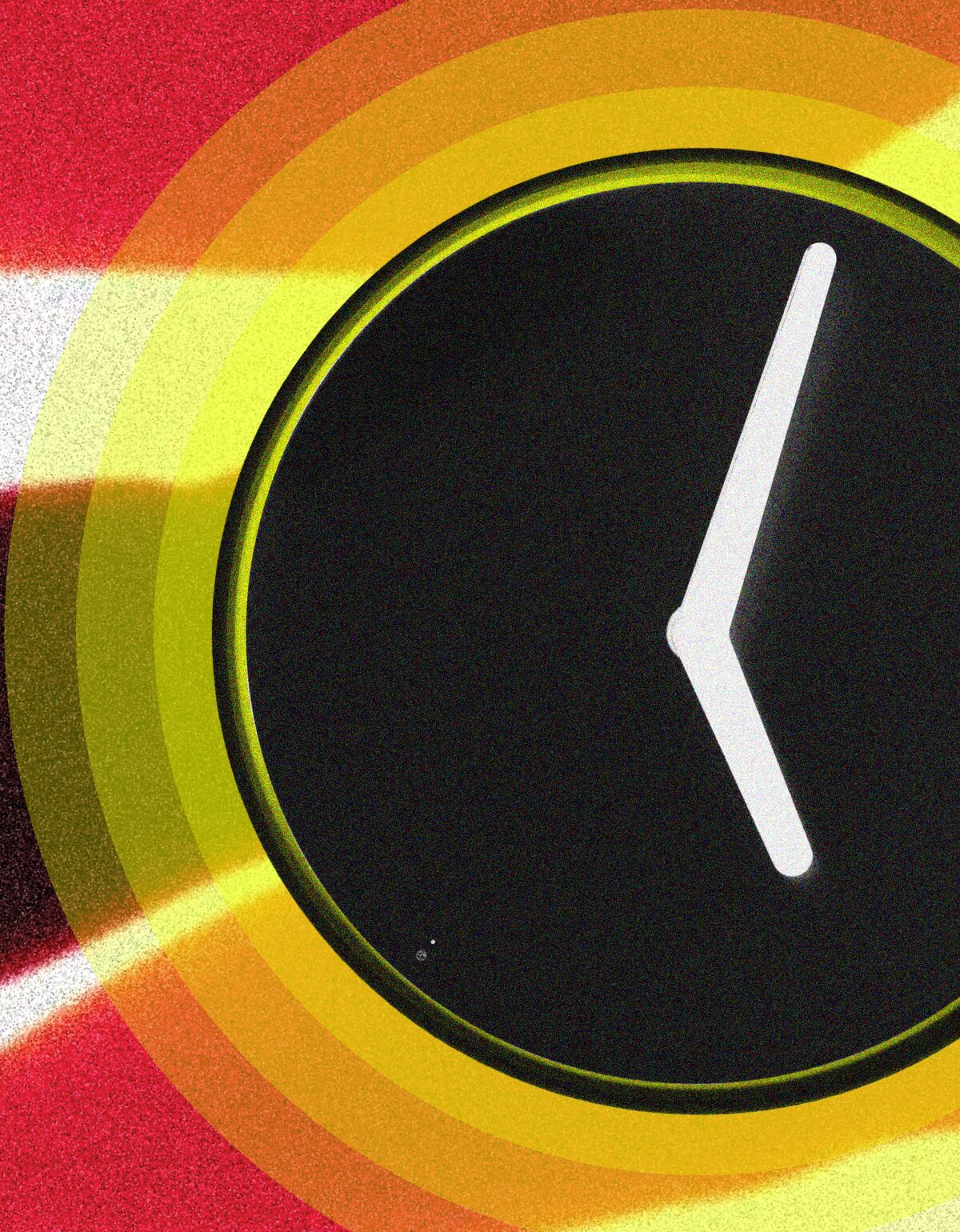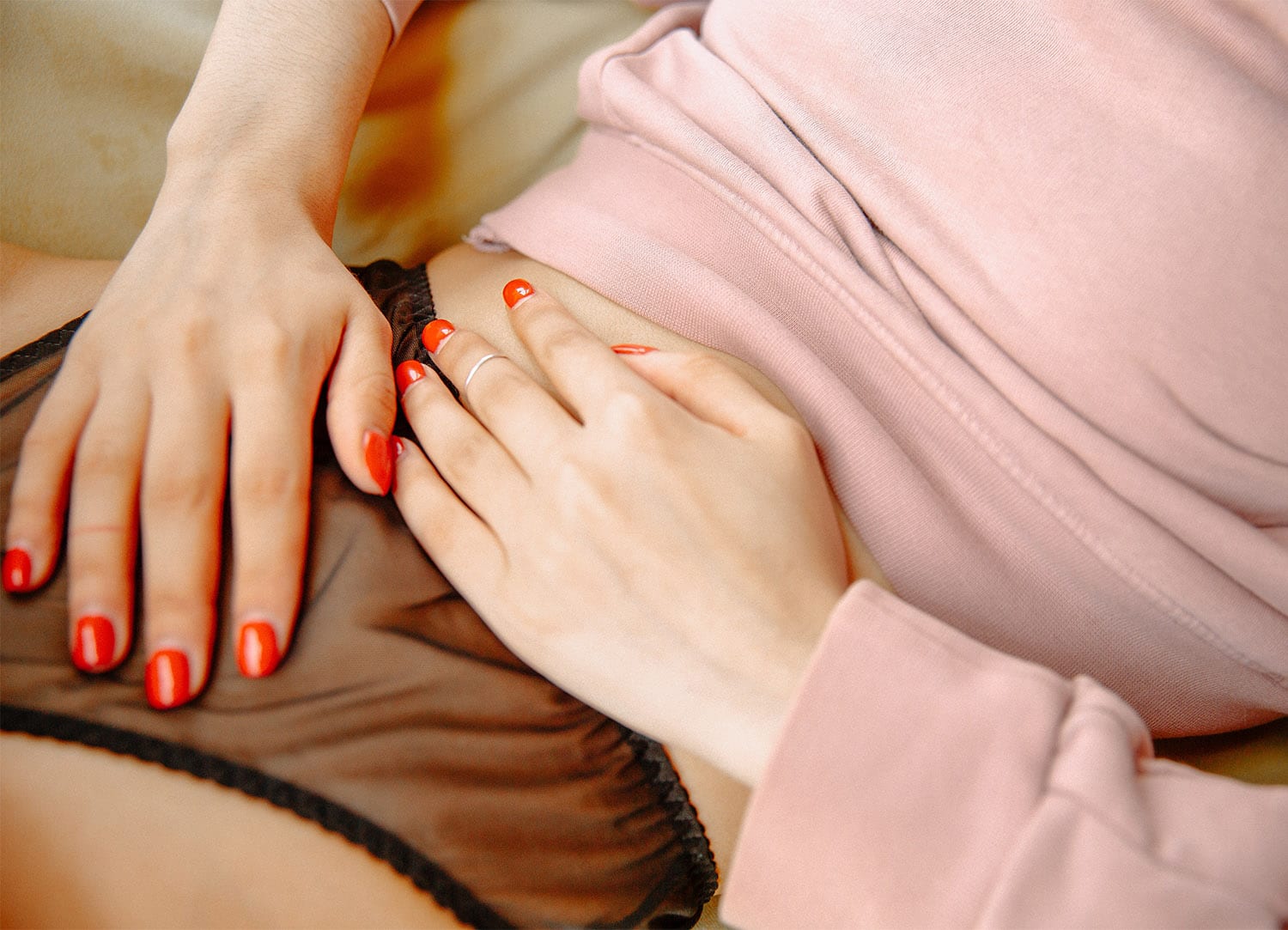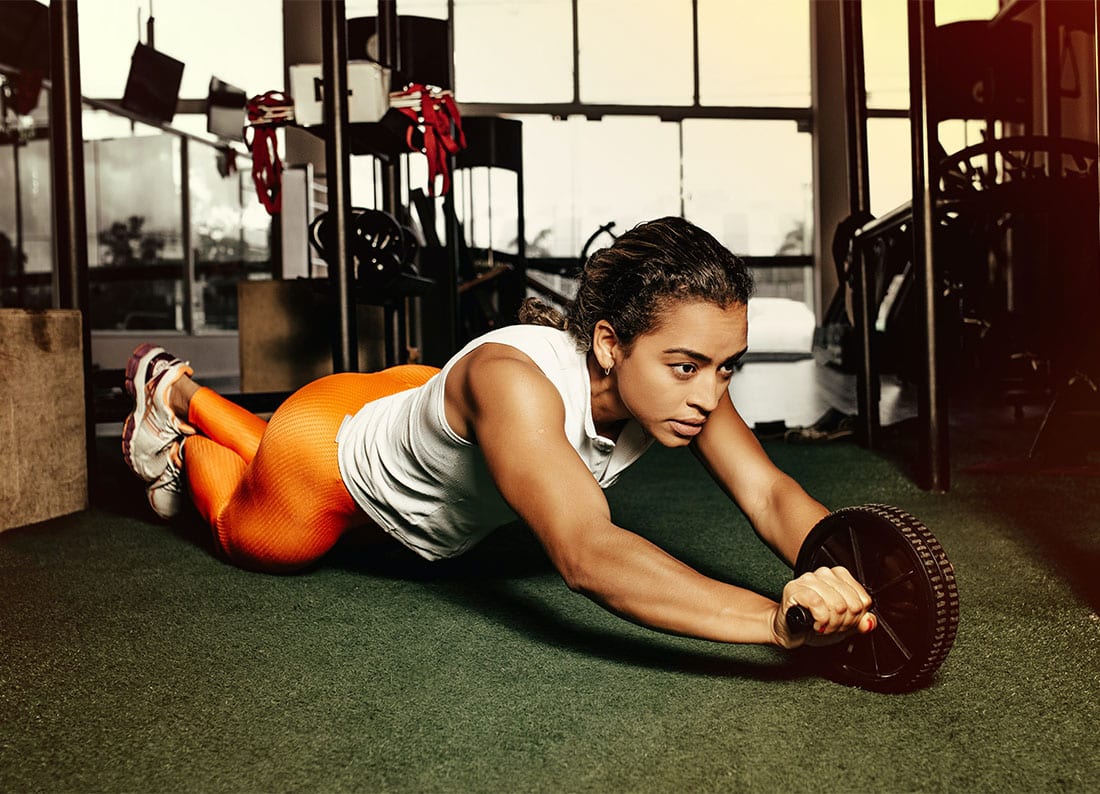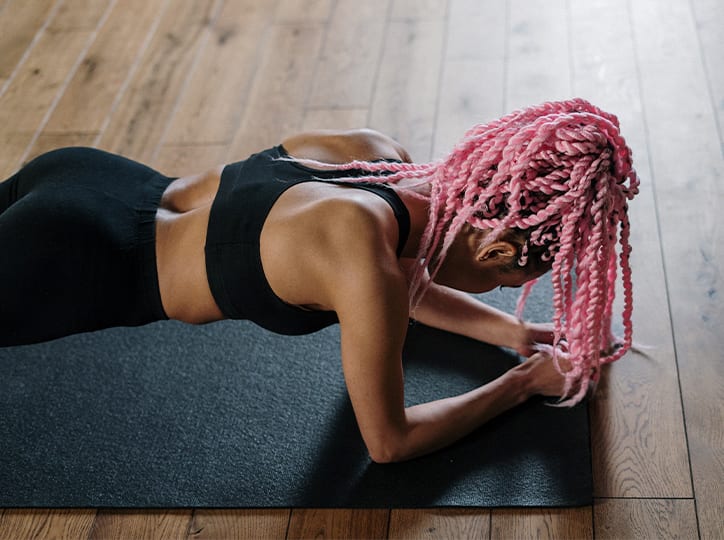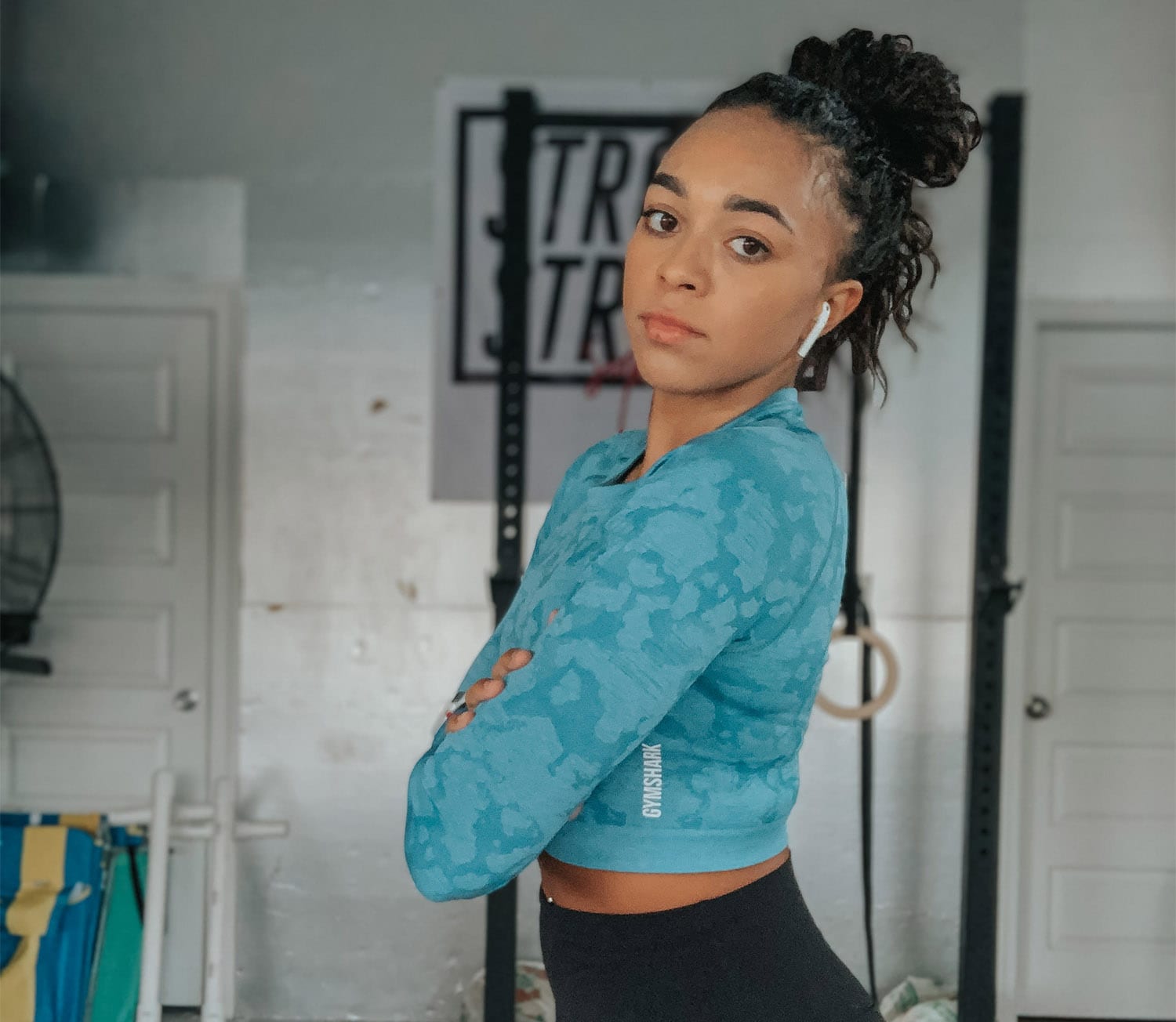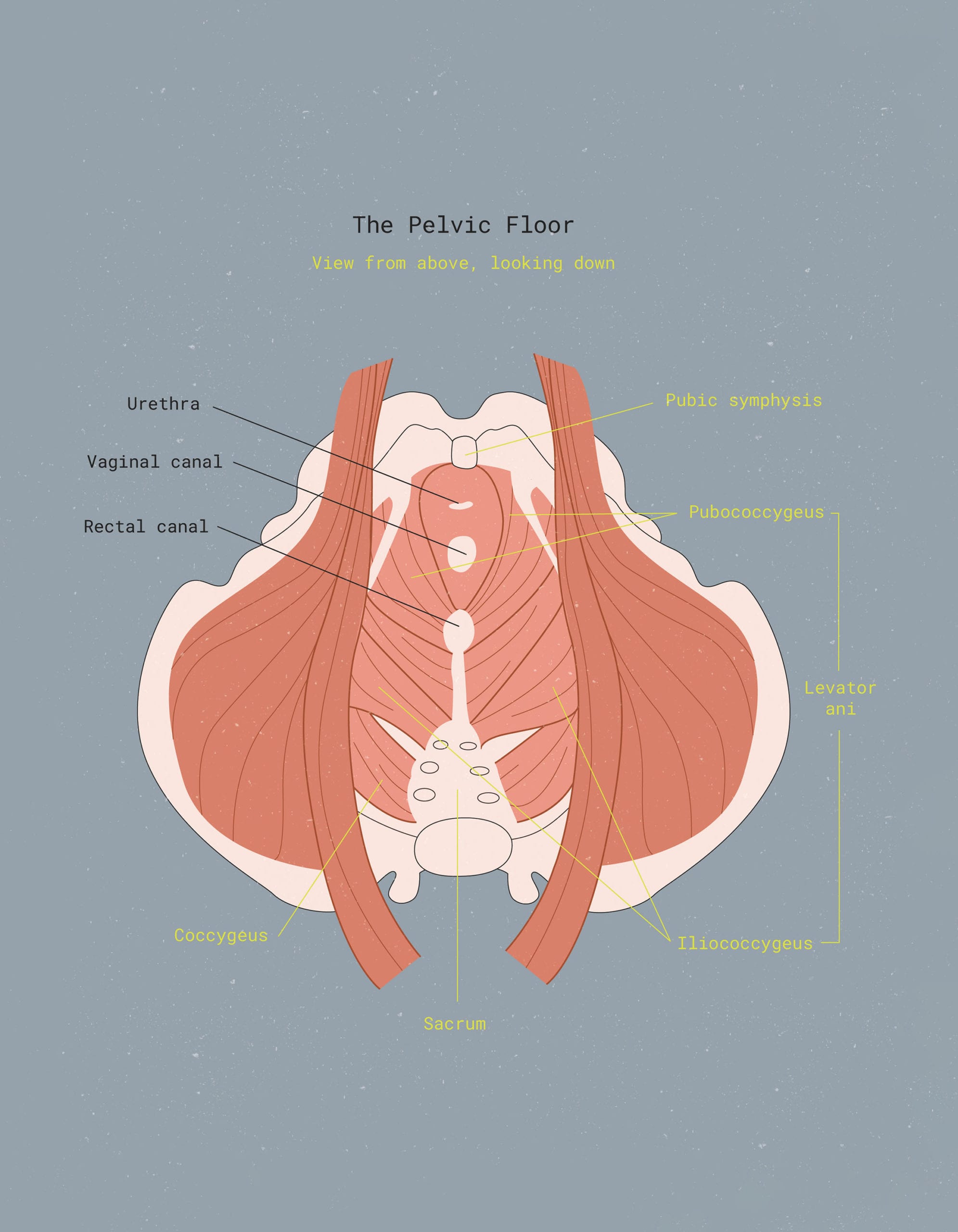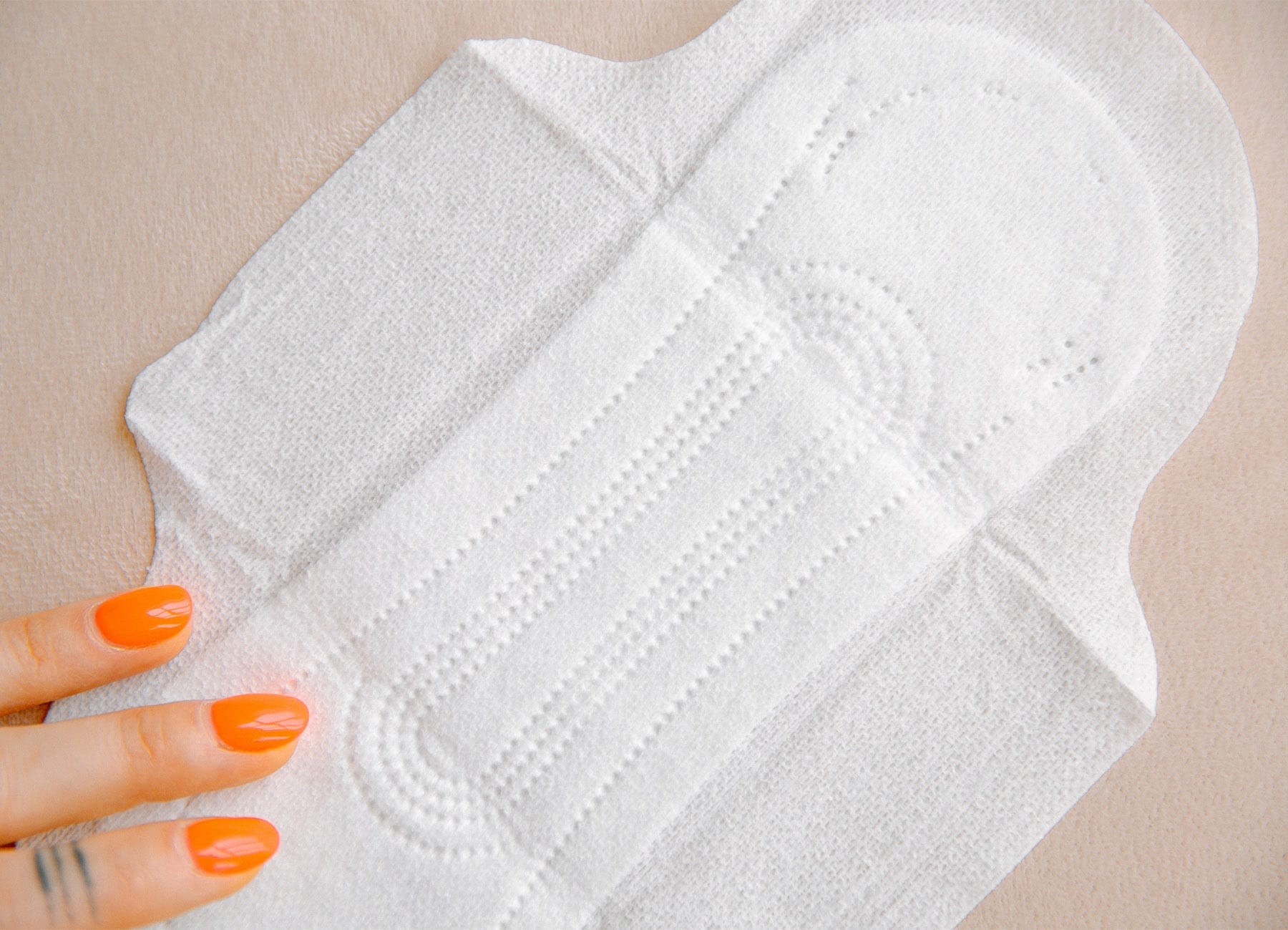Try these restorative yoga poses for cramps & PMS
TL/DR: Studies show that yoga is a great way to naturally relieve period cramps – but only if you’re working with the right poses. Find out how Child’s Pose, Supported Bridge, and Cat-Cow (plus mindful breathwork) can help you stay grounded during your period.
Period cramps got you down? Before you curl up in bed with an armful of snacks for a Great British Baking Show marathon, consider taking a few minutes to practice mindful breathing and stretch out your body.
We get it: when PMS arrives with the fury of a thousand suns, the last thing we usually want to do is move around more, much less exercise. But studies show that people who practice yoga during their periods experience significantly less pain (both in terms of intensity and duration) than those who don’t.1 And, when practiced correctly, certain yoga poses and flows can also reduce bloating, decrease stress, help you sleep, and even boost your mood.
Of course, it’s important to listen to your body when you have your period (and any time of the month, really). Yoga isn’t a competitive sport, so there’s zero reason you need to dive headfirst into challenging poses: Doing so could actually make things worse.2,3 Instead, think of your period as a time to slow down, nurture your body, and give some extra love to any limbs, internal organs, or creaky joints that could use the TLC.
To help you get started on incorporating yoga into your period pain relief regimen, we asked three yoga instructors – Selena, Isabel, and Sandi – to share their favorite flows with us.
Child’s pose, Hatha, & Yin yoga flows for period cramp relief
The first yogi we spoke with, Selena Brown, is a professional youth speaker and yoga & meditation teacher. She leads meditative, growth-oriented, and breath-focused yoga and meditation sessions across the country through her business, Pramana Wellness. So it’s no surprise that her Instagram profile (@pramanawellness) is full of incredible yoga inspiration – including lots of jealousy-inducing balance postures and inversions.
“I give myself permission to rest.”
Selena B., Pramana Wellness
During her period, though, Selena changes things up a bit: “Although I prefer the dancerly flows of Vinyasa over static postures of Hatha during the rest of the month, I tend to avoid vigorous movement on my heavier days,” she shares. Arm balances and handstands are the focus of her personal practice right now, but during her period, she keeps it light and casual.
“I give myself permission to rest and opt for Yin and restorative asana while on my period. When I’m experiencing cramping, I tend to curl into myself, embracing the parts that need attention.” Selena recommends adding compression to the lower belly with Balasana, or Child’s Pose. Child’s Pose can also relieve stress from the back, shoulders, and chest while lengthening the spine – all good things when it comes to alleviating cramps.4
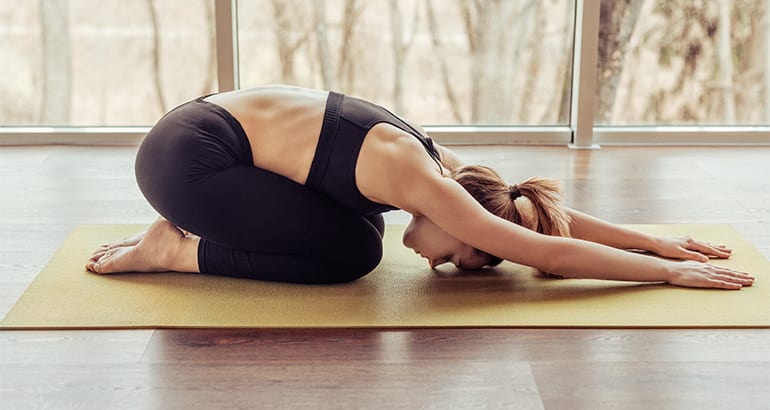
“For those who suffer from lower back pain while menstruating, opening the lumbar in the classic, tucked variation (as opposed to arching the back) may bring additional relief,” Selena says. Here’s how to try it: After breathing intentionally through your normal Child’s Pose, gently reach your hands along your sides and back down to grab the heels of your feet. Use your legs to send your tailbone to the sky, extending your lower back for a deeply satisfying stretch.
Hatha yoga and Yin yoga are two styles of yoga that tend to be gentler on the body and a little lower in intensity than the active Vinyasa classes you may be familiar with.

Hatha yoga (as we know it in the US, at least) tends to incorporate lots of static postures and mindful breathwork flowing together at a manageable pace. Yin yoga is even slower and more methodical, targeting your deeper connective tissue (like the fascia and ligaments) with steady, mindful stretching in mostly seated postures. Either of these two styles are a great choice if you’re searching YouTube for a yoga class to try out on your period.
Yogic breathwork & supported bridge pose to manage period-related stress
Isabel Baylor’s (@isabelbey) practice is driven by her mission to improve mental health and wellness within the BIPOC community. You can sign up for one of her classes at Sky Ting Yoga or Tangerine Yoga in NYC – or join virtually via live stream on her website. When we asked Isabel about her favorite flows to relieve menstrual cramps during her period, she recommended trying breathwork, first, to help relax the nervous system.
“Relaxing can be hard – like, really hard – but during my period, my body is essentially asking me to SLOW DOWN,” Isabel shares. “Four-seven-eight breath is my go-to breath practice when battling insomnia and reducing stress during my monthly. This breath pattern takes 1-3 minutes and can be performed anywhere.”
Popular wellness guru Dr. Andrew Weil is usually credited for creating this breathing technique that can help you settle your body and alleviate stress.5 Here’s how to do it, in Isabel’s words.
- Make contact with the tip of your tongue behind the top front teeth, and keep it there throughout the practice
- Take a clearing breath and exhale your air, to start
- Close the mouth and begin to quietly inhale through the nose for a count of four
- At the top of the inhale, keep the mouth closed as you hold the breath for a count of seven
- Exhale fully through the mouth for a count of eight
- This is one complete cycle; repeat for 3-5 more cycles
Notice where the body is tensing up as you hold the breath at the top of your inhale. This whole-body scan will help you figure out which parts of your body are holding onto the most stress (Is it your shoulders? Your lower back? Your neck and jaw?) so you can work on releasing it during your yoga practice.
“We can honor where we are in our cycles.”
Isabel B., yoga instructor
Isabel also recommends trying Setu Bandha Sarvangasana, a.k.a. Supported Bridge pose, for added period pain relief:
“Lie on your back, lift the pelvis and place a block underneath the sacrum. Position the knees over the ankles at the right angles to provide a stable base for your hips.” The supported bridge can help the nervous system by raising the body above the head in a really gentle way. “In this pose, the block takes pressure off the low back and opens up the front of the pelvis, feeding breath to the kidneys,” Isabel adds.
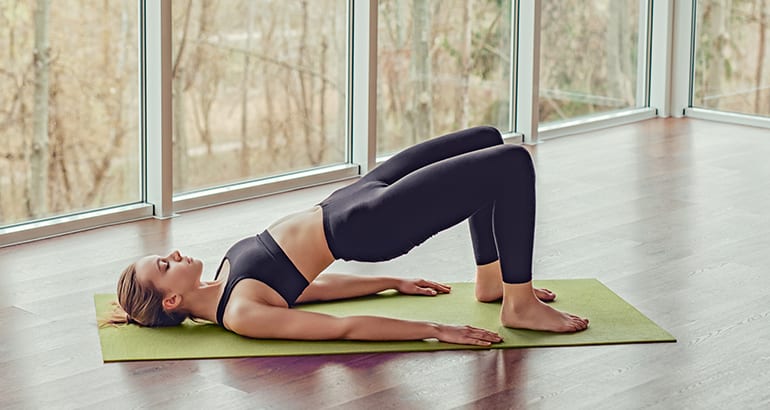
If you don’t have a yoga block, you can use a stack of books or a folded blanket to prop up your pelvis. Don’t forget to continue your breathwork and, if you want, close your eyes to increase the level of relaxation. In addition to reducing cramps, Supported Bridge pose can lend a helping hand to your digestive organs and refresh tired, achy legs.6
Tabletop & cat-cow poses to alleviate tension in the lower back
Sandi Preston, the third yogi we talked to, is a new mom and the co-owner of And Yoga Studios (@andyogastudios) in Bed Stuy, Brooklyn. Like many of us, Sandi shared that she typically feels a lot of pressure in the low back during her period. “I tend to focus on a very grounded flow,” she explains. “Usually, I start out in a Seated Bound Angle, focusing on my breath, and then transition into Tabletop position with a Cat-Cow pose.”
“I take my time, holding what feels good the longest.”
Sandi P., And Yoga Studios

At first glance, Tabletop pose (Bharmanasana) seems pretty self-explanatory: You’re on your hands and knees with a straight back; arms are extended and parallel to your thighs. There are a few things to watch out for, however, to make sure you’re getting the most out of the pose. For example, some people tend to reach too far forward on their mat when they get into Tabletop (i.e. hands and knees are too far apart from one another).
To perfect your Tabletop, make sure that your hands are stacked directly underneath your shoulders and keep a slight bend in your elbows. Your core should be engaged and your spine should be in a neutral position (including your neck – so keep your eyes on the floor). Keep your knees about hip-distance apart and grip your mat with your fingertips, making sure your hands and forearms are active.
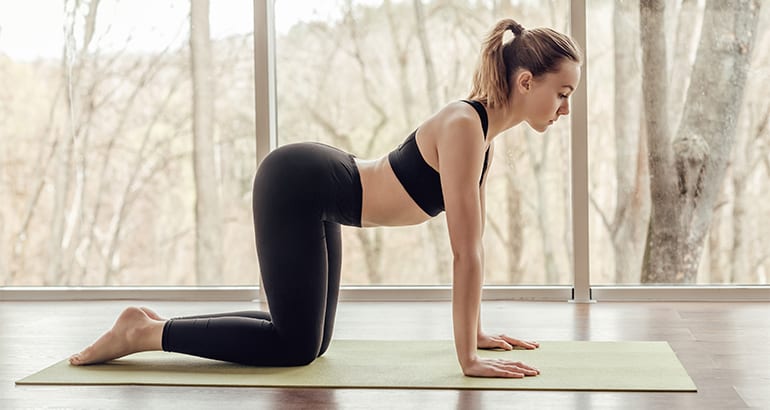
Then, add to Tabletop Pose with a gentle Cat-Cow flow:
- Inhale and look forward, dropping your belly towards the floor, gazing forwards (or upwards, if it feels good), and sending energy out through your sternum and tailbone. That’s Cow pose.
- For Cat pose, exhale, and slowly return to a neutral spine, trying to shift just one vertebra at a time. Then, begin to tuck your chin towards your chest, draw your belly button toward your spine, and round your back.
- Repeat this sequence as many times as you need to, always moving with your breath – inhale for cow, exhale for cat – and returning to Tabletop in between each pose.
“The cat-cow movement improves blood flow along the spine,” Sandi adds. “I take my time, holding what feels good the longest.”
As if Sandi’s yogi skills and entrepreneurial prowess weren’t impressive enough already, she shares this tidbit with us, too: “Fun fact: I gave birth to my daughter in Tabletop Pose. Having labored through natural childbirth with contractions that I felt most intensely in my low back, I instinctively turned to the same poses that aided me during my menstrual cycle for relief.” Great idea – and major props to Sandi for an incredible birthing story.
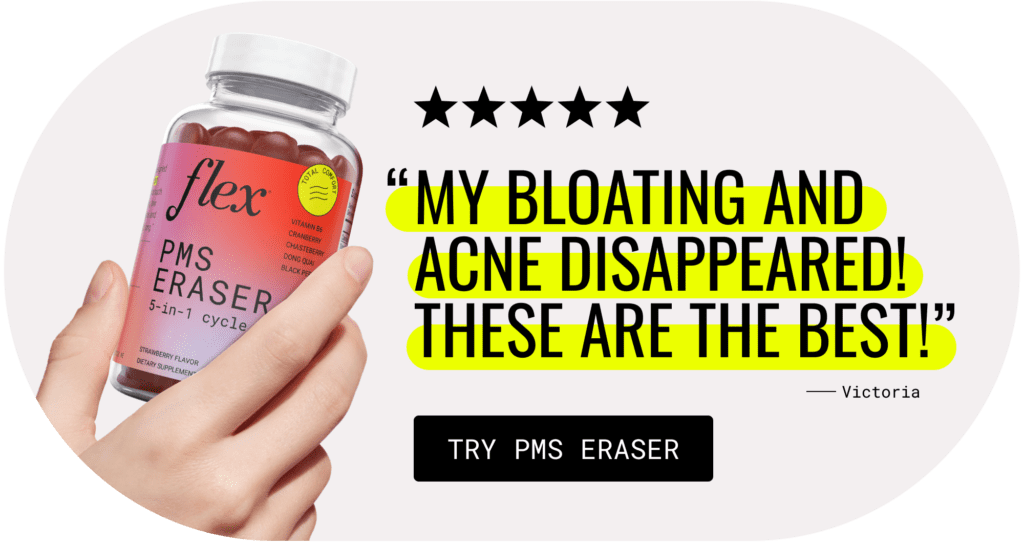
Treat yourself to gentle yoga flows during your period
We’re so grateful to Selena, Isabel and Sandi for sharing their yoga knowledge and giving us these simple tools for managing period pain. Of course, don’t feel like you’re limited to gentle Hatha or Yin yoga just because you’re bleeding: More strenuous exercise, including cardio and strength training, is totally fine to do on your period. Just listen to your body, practice that breathwork, and keep doing whatever feels good.
Grabbing that yoga mat doesn’t mean you have to give up the chocolate, the snacks, or the Netflix marathon (we fully support it all). But if you’re looking for a way to relieve cramps, reduce stress, and alleviate bloating, give these yoga flows a try. We bet you’ll feel SO much better afterwards – and your super-tight muscles will thank you for it, too.
This article is informational only and is not offered as medical advice, nor does it substitute for a consultation with your physician. If you have any gynecological/medical concerns or conditions, please consult your physician.
© 2021 The Flex Company. All Rights Reserved.
